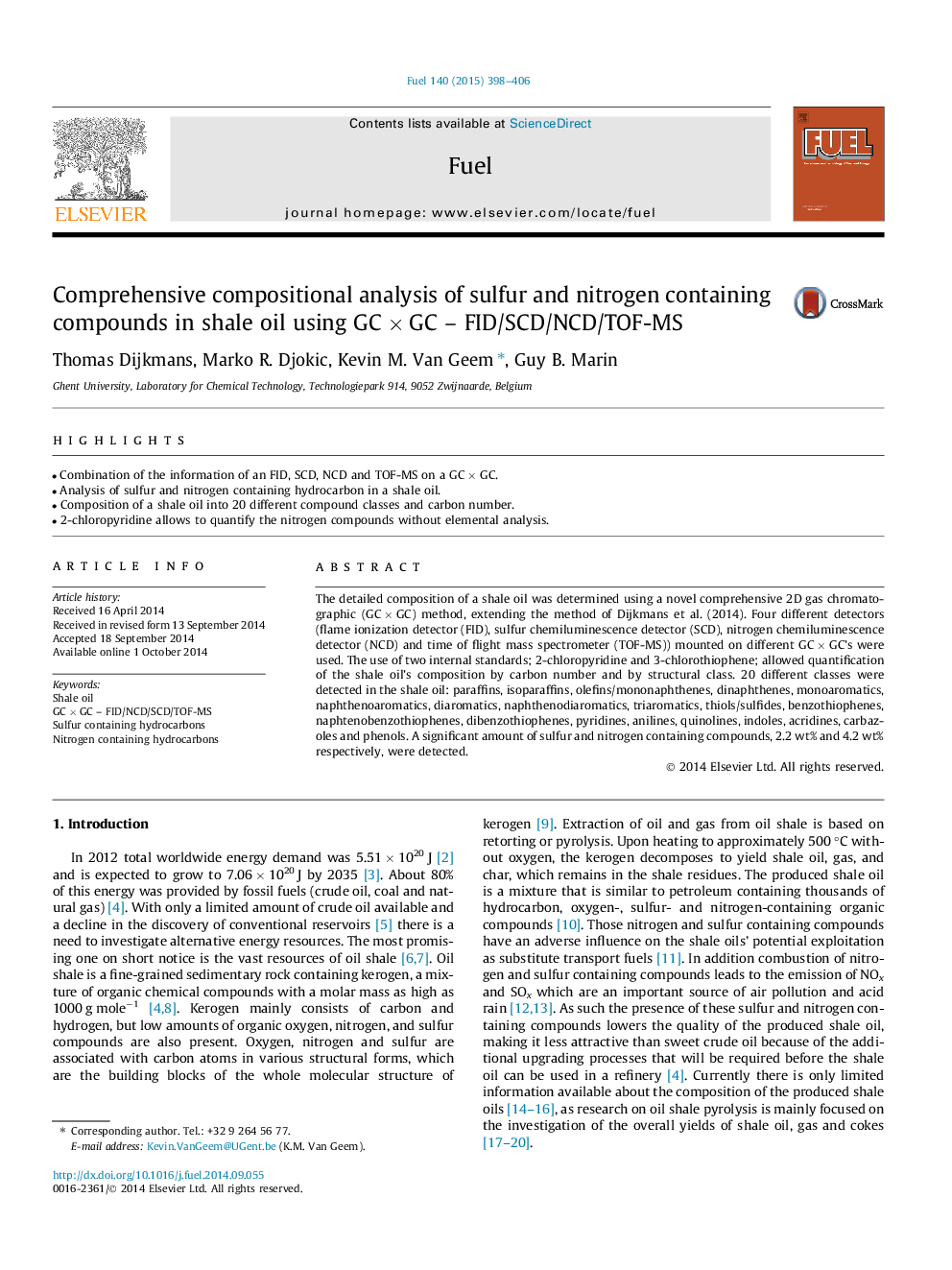| Article ID | Journal | Published Year | Pages | File Type |
|---|---|---|---|---|
| 6636267 | Fuel | 2015 | 9 Pages |
Abstract
The detailed composition of a shale oil was determined using a novel comprehensive 2D gas chromatographic (GCÂ ÃÂ GC) method, extending the method of Dijkmans et al. (2014). Four different detectors (flame ionization detector (FID), sulfur chemiluminescence detector (SCD), nitrogen chemiluminescence detector (NCD) and time of flight mass spectrometer (TOF-MS)) mounted on different GCÂ ÃÂ GC's were used. The use of two internal standards; 2-chloropyridine and 3-chlorothiophene; allowed quantification of the shale oil's composition by carbon number and by structural class. 20 different classes were detected in the shale oil: paraffins, isoparaffins, olefins/mononaphthenes, dinaphthenes, monoaromatics, naphthenoaromatics, diaromatics, naphthenodiaromatics, triaromatics, thiols/sulfides, benzothiophenes, naphtenobenzothiophenes, dibenzothiophenes, pyridines, anilines, quinolines, indoles, acridines, carbazoles and phenols. A significant amount of sulfur and nitrogen containing compounds, 2.2Â wt% and 4.2Â wt% respectively, were detected.
Keywords
Related Topics
Physical Sciences and Engineering
Chemical Engineering
Chemical Engineering (General)
Authors
Thomas Dijkmans, Marko R. Djokic, Kevin M. Van Geem, Guy B. Marin,
